រដ្ឋកាលីហ្វ័រញ៉ា —
កំណត់និពន្ធ៖ អង្គការ Cambodians in Tech ឬ «ខ្មែរនៅក្នុងវិស័យបច្ចេកវិទ្យា» ជាអង្គការថ្មីមួយមានមូលដ្ឋាននៅតំបន់បច្ចេកវិទ្យា Silicon Valley ក្នុងរដ្ឋ Californiaដែលមានគោលដៅជួយជំរុញឲ្យមានជនជាតិខ្មែរនិងខ្មែរអាមេរិកាំងច្រើនជាងមុនបម្រើការនៅក្នុងវិស័យបច្ចេកវិទ្យាទាំងនៅសហរដ្ឋអាមេរិក និងទូទាំងពិភពលោក។ នៅចុងសប្ដាហ៍នេះ អង្គការនេះ នឹងរៀបចំកម្មវិធីប្រកួតការសរសេរកម្មវិធីកុំព្យូទ័រនិងការបង្កើតគំនិតថ្មីខាងបច្ចេកវិទ្យាដែលគេហៅថា hackathon នៅរាជធានីភ្នំពេញចាប់ពីថ្ងៃទី២៦ ដល់២៧ ខែវិច្ឆិកា ដើម្បីភ្ជាប់ទំនាក់ទំនងរវាងតំបន់បច្ចេកវិទ្យា Silicon Valleyជាមួយនឹងប្រទេសកម្ពុជា។ លោក សឹង សុផាត នៃ VOA បានសម្ភាសកញ្ញា Maya Gilliss-Chapman ស្ថាបនិកនៃអង្គការ «ខ្មែរនៅក្នុងវិស័យបច្ចេកវិទ្យា» នៅក្នុងក្រុង Palo Alto រដ្ឋ California ដើម្បីស្វែងយល់បន្ថែមអំពីអង្គការ Cambodians in Tech និងការប្រកួត hackathon នេះដូចតទៅ៖
ចាស កាលពីប៉ុន្មានឆ្នាំមុន ខ្ញុំគិតថាខ្ញុំជាជនជាតិខ្មែរតែម្នាក់ដែលធ្វើការក្នុងវិស័យបច្ចេកវិទ្យានៅតំបន់បច្ចេកវិទ្យា Silicon Valley នៅរដ្ឋកាលីហ្វ័រញ៉ា (California)។ នៅរាល់ខែមេសា ខ្ញុំតែងនិយាយថា «សួស្ដីឆ្នាំថ្មី!» ហើយអ្នករាល់គ្នាតែងនិយាយមកកាន់ខ្ញុំថា «អ្នកឯងមានបញ្ហាមែនទេ» ដោយសារជនជាតិអាមេរិកាំងមិនដឹងថា ខែមេសាជាបុណ្យចូលឆ្នាំរបស់ខ្មែរ។
នៅទីបំផុត ខ្ញុំបានជួបជនជាតិខ្មែរម្នាក់ទៀតដែលធ្វើការនៅក្នុងវិស័យបច្ចេកវិទ្យា ហើយពេលនោះខ្ញុំមានការភ្ញាក់ផ្អើលខ្លាំង។ យើងមើលមុខគ្នាហើយសួរគ្នាថា«ចេះខ្មែរ»? ពេលនោះខ្ញុំរីករាយណាស់ ប៉ុន្តែខ្ញុំក៏ដឹងដែរថា មានបញ្ហាធំមួយ។
ខ្ញុំបានសួរខ្លួនឯងថា ហេតុអ្វីបានជាមានជនជាតិខ្មែរតិចយ៉ាងនេះធ្វើការនៅក្នុងវិស័យបច្ចេកវិទ្យានៅអាមេរិក? ខ្ញុំក៏ស្រាវជ្រាវ ហើយរកឃើញថា ជនជាតិខ្មែរអាមេរិកាំងមានចំនួនត្រឹម១%នៃចំនួនពលរដ្ឋអាមេរិកសរុប ហើយពលរដ្ឋខ្មែរអាមេរិកាំងប្រមាណ១ភាគ៣រស់នៅក្រោមបន្ទាត់ភាពក្រីក្រ។
យើងបានដឹងពីបញ្ហាភាពក្រីក្រនេះយូរហើយ ប៉ុន្តែប្រសិនបើយើងរស់នៅក្រោមបន្ទាត់នៃភាពក្រីក្រនោះ មានមនុស្សតិចតួចណាស់ដែលនឹងអាចមានលទ្ធភាពនិងធនធានផ្សេងៗដូចការអប់រំ។
មានពលរដ្ឋខ្មែរអាមេរិកាំងអាយុលើស២៥ឆ្នាំត្រឹម៥៤%ប៉ុណ្ណោះដែលបានរៀនចប់វិទ្យាល័យ។ ដូច្នេះពេលអ្នកគិតឃើញដល់តំបន់បច្ចេកវិទ្យាជាន់ខ្ពស់ដូច Silicon Valley ហើយរបៀបក្រុមហ៊ុននៅទីនោះរើសបុគ្គលិកពីសាលាល្បីៗដូចជា Stanford Harvard និងសាលារបស់ខ្ញុំគឺសាកលវិទ្យាល័យ Berkeley យើងអាចយល់ហើយថាហេតុអ្វីពួកគេមិនបានយកជនជាតិខ្មែរធ្វើការ ពីព្រោះពលរដ្ឋខ្មែរអាមេរិកាំងភាគច្រើន មិនបានចូលសាលាល្បីៗទាំងនោះ ឬមិនបានចូលរៀនមុខវិទ្យាខាងបច្ចេកវិទ្យាទេ។ ពេលខ្ញុំបានដឹងពីតួលេខនេះ ទើបខ្ញុំដឹងថាខ្ញុំត្រូវតែធ្វើអ្វីមួយដើម្បីកែប្រែស្ថានភាពនេះ។ ដូច្នេះហើយទើបខ្ញុំក៏បានបង្កើតអង្គការ «ខ្មែរនៅក្នុងវិស័យបច្ចេកវិទ្យា» ឬ Cambodians in Tech នេះឡើង ដែលបានលូតលាស់មកដល់សព្វថ្ងៃនេះ។
កញ្ញា Maya Gilliss-Chapman ថារហូតមកដល់ពេលនេះអង្គការរបស់កញ្ញាបានទទួលដំណើរការល្អ។ តើអង្គការ Cambodians in Tech បានជួយជនជាតិខ្មែរប៉ុន្មាននាក់ថែមទៀតឲ្យចូលទៅក្នុងវិស័យបច្ចេកវិទ្យា?
អង្គារ Cambodians in Tech ផ្តោតលើបីផ្នែកជាសំខាន់ គឺការបង្កើតសហគមន៍ ការអប់រំ និងការលើកទឹកចិត្តតាមរយៈការបង្ហាញបុគ្គលគំរូ។ នៅក្នុងពីរឆ្នាំចុងក្រោយ អង្គការខ្ញុំបានកើនសមាជិករហូតដល់ជាង៣០នាក់ទៅទូទាំងសហរដ្ឋអាមេរិកនិងសរុបប្រទេសចំនួន៤។
សម្រាប់ខ្ញុំ នេះជាចំនួនដ៏ច្រើនព្រោះខ្ញុំមិនចាំថាមានពេលណាដែលខ្ញុំធ្លាប់បានដើរចូលទៅក្នុងបន្ទប់មួយដែលមានជនជាតិខ្មែរ៣០នាក់ដែលសុទ្ធតែជាអ្នកធ្វើការនៅក្នុងវិស័យបច្ចេកវិទ្យានោះ។ បើនិយាយពីយុទ្ធសាស្ត្រខាងការអប់រំវិញ យើងកំពុងជំរុញគម្រោងខាងការអប់រំនៅទីក្រុង Seattle រដ្ឋវ៉ាស៊ីនតោនដែលមានជនជាតិខ្មែរច្រើនរស់នៅ។
យើងកំពុងពិភាក្សានៅឡើយអំពីគម្រោងលម្អិត ប៉ុន្តែខ្ញុំបានទាក់ទងសមាគមនិស្សិតខ្មែរនៅសាកលវិទ្យាល័យ Stanford និង Berkeley ដើម្បីឲ្យពួកគេដែលបានរៀននៅសាលាល្អៗទាំងនេះដឹងថា ពួកគេក៏គួរជួយក្មេងៗជំនាន់ក្រោយៗទៀត ពីព្រោះការបណ្ដុះជំនាញខាងវិស័យនេះគឺចាប់ផ្ដើមតាំងពីនៅក្មេងៗយ៉ាងដូច្នេះ។ ហើយអង្គការរបស់ខ្ញុំ ក៏មិនអាចធ្វើអ្វីបានដោយខ្លួនឯងតែម្នាក់នោះទេ។
រហូតមកដល់ពេលនេះ តើ Cambodians in Tech បានសម្រេចអ្វីខ្លះ?
យើងខ្ញុំមិនទាន់បានជួបជុំគ្នាជាទ្រង់ទ្រាយធំនៅឡើយ។ ប៉ុន្តែយើងនឹងជួបជុំគ្នានៅក្នុងកម្មវិធីប្រកួតសរសេរកូដ(កម្មវិធី)កុំព្យូទ័រដែលហៅថា hackathon នៅក្នុងរាជធានីភ្នំពេញនៅខែវិច្ឆិកានេះ ដែលនេះជាព្រឹត្តិការណ៍ធំដំបូងរបស់អង្គការខ្ញុំ ហើយសមាជិកទាំងអស់នឹងត្រូវស្វាគមន៍ឲ្យចូលរួម។
ប៉ុន្តែយ៉ាងណាក៏ដោយ ខ្ញុំដឹងថា មិនមែនគ្រប់គ្នាមានលទ្ធភាពអាចធ្វើដំណើរទៅចូលរួមកម្មវិធីនៅប្រទេសកម្ពុជាឬនៅទីក្រុងណាមួយបានទេ។ ដូច្នេះ ខ្ញុំធ្វើដំណើរទៅក្រុងនានាដែលមានសមាជិកអង្គការ Cambodians in Tech ដើម្បីយើងអាចស្គាល់គ្នានិងពិភាក្សាអំពីគម្រោងនានាដែលយើងមាននៅពេលអនាគត។
ខ្ញុំទើបបានទៅទីក្រុង Seattle ដើម្បីពិភាក្សាអំពីកម្មវិធី hackathon នៅប្រទេសកម្ពុជានិងកម្មវិធីបង្ហាត់បង្ហាញ (mentoring) សម្រាប់យុវជនខ្មែរអាមេរិកាំងនៅទីក្រុង Seattle។ នេះជាកម្មវិធីនានាដែលយើងកំពុងដំណើរការ។ យើងខ្ញុំក៏កំពុងតែរៃអង្គាសប្រាក់ ដោយសារតែកម្មវិធីអប់រំទាំងនេះត្រូវការថវិកាលើសពីលទ្ធភាពរបស់ខ្ញុំ។
គោលបំណងរបស់ខ្ញុំ ហើយខ្ញុំមិនដឹងថាពេលណាបានសម្រេចនោះទេ គឺអនុវត្តនូវគម្រោងអប់រំនានាដូចជាការបង្កើតថ្នាក់រៀនសរសេរកូដកុំព្យូទ័រ និងផ្ដល់កុំព្យូទ័រ និងសម្ភារៈខាងការអប់រំដូចជាផ្ដល់គ្រូបង្រៀននិងសៀវភៅជាដើម ដើម្បីបង្រៀនយុវជនឲ្យចេះសរសេរកូដ និងអាចចូលរៀនជំនាញបច្ចេកទេស ដោយយើងខ្ញុំនឹងមានផ្ដល់អាហារូបករណ៍។
ខ្ញុំគិតថាជនជាតិខ្មែរជាច្រើនមិនដឹងថា ការចាប់យកអាជីពខាងវិស័យបច្ចេកវិទ្យាជាជម្រើសមួយទេសម្រាប់ពួកគេ ហើយយើងខ្ញុំនឹងទៅទីនោះដើម្បីបង្ហាញនិងលើកទឹកចិត្តពួកគេ ហើយបើពួកគេសម្រេចថានឹងយកជំនាញនេះ យើងខ្ញុំនឹងជួយបន្ថែមទៀតឲ្យអាចរៀនយកសញ្ញាប័ត្រខាងជំនាញបច្ចេកទេសនេះ ដោយផ្ដល់អាហារូបករណ៍ដល់ពួកគេ។ នេះជាគោលដៅចុងក្រោយរបស់យើង។
តើរហូតមកដល់ពេលនេះ អង្គការកញ្ញាបានថវិកាទ្រទ្រង់ពីខាងណា?
មកដល់ពេលនេះ ខ្ញុំចេញថវិកាផ្ទាល់ខ្លួនសិន។ ពេលនេះ វាមិនទាន់ចោទជាបញ្ហាទេ ប៉ុន្តែវាជាបញ្ហានៅពេល មានសំណូមពរចង់ឲ្យអង្គការ Cambodians in Tech ជួយកម្មវិធីជាច្រើនទៀតដែលហួសលទ្ធភាពរបស់ខ្ញុំ។ ខ្ញុំចំណាយរាប់ពាន់ដុល្លារក្នុងមួយឆ្នាំ។ បើមានលទ្ធភាព នោះ ខ្ញុំនឹងអាចចំណាយរាប់ម៉ឺនសម្រាប់អាហារូបករណ៍ ប៉ុន្តែនៅពេលនេះ យើងមិនទាន់មានលទ្ធភាពទេ។
ការធ្វើដំណើរសម្រាប់កម្មវិធី hackathon ក៏ត្រូវចំណាយសោហ៊ុយច្រើន ដែលយើងមិនធ្លាប់បានធ្វើពីមុន ព្រោះត្រូវនាំអ្នកជំនាញជាច្រើនរួមទាំងអ្នកវាយតម្លៃគម្រោងនានាដែលចូលរួមនៅក្នុងការប្រកួតនេះ។ យើងខ្ញុំសង្ឃឹមថា នឹងអាចទាក់ទាញអ្នកជំនាញពីតំបន់បច្ចេកវិទ្យា Silicon Valley មកវាយតម្លៃគម្រោងទាំងនេះ ហើយរំពឹងថានឹងមានសោហ៊ុយចំណាយកាន់តែច្រើនទៀតដែលខ្ញុំមិនបានគិតដល់។ ប៉ុន្តែគម្រោងការប្រកួត hackathon ដើម្បីភ្ជាប់ Silicon Valley ទៅរាជធានីភ្នំពេញនេះ ជាគំនិតផ្តួចផ្តើមរបស់សហការីរបស់ខ្ញុំគឺលោក ឃុត សុភាស់ ដែលជាសមាជិកអង្គការ CiT នៅទីក្រុង Seattle។ នេះជាគម្រោងរបស់លោក ហើយខ្ញុំគ្រាន់តែជួយរៃអង្គាសថវិកាសម្រាប់គម្រោងនេះតែប៉ុណ្ណោះ។
តើគម្រោងការប្រកួត hackathon ដែលនាំពី Silicon Valley មកភ្នំពេញនេះ នឹងមានអ្នកចូលរួមប្រកួតប៉ុន្មាននាក់ ហើយខុសពីកម្មវិធីប្រកួត hackathon ផ្សេងទៀតដែលមាននៅកម្ពុជាយ៉ាងណាខ្លះ?
ខ្ញុំរីករាយនឹងទទួលពាក្យយ៉ាងច្រើន ប៉ុន្តែតាមលទ្ធភាពរបស់យើងខ្ញុំ ប្រហែលជាអាចទទួលបានត្រឹម២០នាក់ហើយចែកជាក្រុមតូចៗដើម្បីចូលប្រកួត ដោយសារនេះជាការប្រកួតលើកដំបូងដែលអង្គការ CiT បានធ្វើ។ យើងក៏មិនប្រកាន់អាយុអ្នកចូលរួមដែរ។
ដោយនេះជាការប្រកួត យើងគិតថានឹងមានរង្វាន់ជាប្រាក់សម្រាប់គំនិតដែលល្អជាងគេ ហើយដែលនឹងមានគណៈកម្មការវាយតម្លៃដែលជាអ្នកជំនាញនិងសមាជិកអង្គការ CiT។
យើងខ្ញុំក៏សង្ឃឹមថានឹងមានអ្នកដឹកនាំពីវិស័យបច្ចេកវិទ្យារបស់កម្ពុជាចូលរួមព្រមទាំងរំពឹងថានឹងនាំឥស្សរជនមួយរូបពី Silicon Valley មកធ្វើជាអ្នកវាយតម្លៃម្នាក់។ ជាសំខាន់នោះ គឺក្នុងពេលកន្លងមក ខ្ញុំមិនសូវឃើញមានទំនាក់ទំនងរវាងតំបន់ Silicon Valley និងប្រទេសកម្ពុជានៅឡើយ។
ខ្ញុំមិនដឹងថាមានអ្នកវិនិយោគនិងសហគ្រិនខាងបច្ចេកវិទ្យាប៉ុន្មាននាក់ពី Silicon Valley ដែលទៅប្រទេសកម្ពុជាទេ។ ដោយហេតុនេះហើយ ខ្ញុំសង្ឃឹមថា នៅពេលយើងខ្ញុំអាចនាំពួកគេមកចូលរួមព្រឹត្តិការណ៍ hackathon នៅភ្នំពេញយ៉ាងដូច្នេះ នឹងមានការចាប់អារម្មណ៍ពីបណ្ដាញផ្សាយព័ត៌មានអាមេរិកាំង ហើយជនជាតិអាមេរិកនឹងអាចដឹងថានៅប្រទេសកម្ពុជាក៏មានវិស័យបច្ចេកវិទ្យាដែលកំពុងលូតលាស់ដែរ។
ពេលកញ្ញា Maya ទៅទស្សនាប្រទេសកម្ពុជាចុងក្រោយបំផុត តើមានអ្វីដែល Maya បានភ្ញាក់ផ្អើលទេ?
ចាស ពេលនោះខ្ញុំមិនគិតស្មានថាខ្ញុំមានការយល់ដឹងតិចតួចណាស់អំពីវិស័យបច្ចេកវិទ្យានៅកម្ពុជា។ វិស័យនេះមានលក្ខណៈខុសគ្នាខ្លាំងពីនៅតំបន់ Silicon Valley។ ខ្ញុំឮគេថា ការរកមូលធននៅកម្ពុជាមិនមែនជាបញ្ហាធំទេ។ មានអ្នកហ៊ានបោះទុនវិនិយោគ។ បញ្ហាសំខាន់បំផុតគឺធ្វើយ៉ាងណាជំរុញឲ្យជនជាតិខ្មែរច្រើនជាងមុនក្លាយជាសហគ្រិនខាងបច្ចេកវិទ្យា។
ក្រុមហ៊ុនបច្ចេកវិទ្យាជាច្រើននៅប្រទេសកម្ពុជា ត្រូវគ្រប់គ្រងដោយជនជាតិចិនឬបារាំង ហើយមានក្រុមហ៊ុនតិចណាស់ដែលជារបស់សហគ្រិនខ្មែរ។ រឿងនេះធ្វើឲ្យខ្ញុំភ្ញាក់ផ្អើល ប៉ុន្តែតាមពិតវាមិនមែនជារឿងចម្លែកនោះទេ។
មានអ្នកវិនិយោគដែលចង់ទៅវិនិយោគនៅប្រទេសកម្ពុជាដើម្បីបង្កើតសហគ្រាសបង្កើតថ្មីឬ Startup។ ដូច្នេះអ្នកដែលខ្ញុំបានជួប មានការរីករាយដោយបានជួបនឹងខ្ញុំដែលជាជនជាតិខ្មែរហើយធ្វើការនៅក្នុងវិស័យបច្ចេកវិទ្យា ពីព្រោះគេមិនសូវដែលឃើញជនជាតិខ្មែរ។
ក្នុងដំណើរនោះ ខ្ញុំមិនដឹងថាវិស័យបច្ចេកវិទ្យានៅកម្ពុជាមានការវិវឌ្ឍន៍កម្រិតណានោះទេ ហើយខ្ញុំរីករាយដែលឃើញមានកម្មវិធី startup រាល់ចុងសប្ដាហ៍។ ប៉ុន្តែខ្ញុំមិននឹងស្មានថាការស្វែងរកអ្នកវិនិយោគមិនមែនជាការលំបាកទេ។ អ្វីដែលលំបាកនោះ គឺការជំរុញស្មារតីយុវជនខ្មែរឲ្យហ៊ានធ្វើការប្រថុយរកស៊ីនិងបង្កើតសហគ្រាសបង្កើតថ្មី startup។
ផ្នត់គំនិតរបស់យុវជនខ្មែរប្រហែលជាបានផ្លាស់ប្ដូរខ្លះហើយ ប៉ុន្តែខ្ញុំនៅចាំថា កាលពីខ្ញុំទៅធ្វើជាគ្រូបង្រៀននៅខេត្តពោធិ៍សាត់កាលពីឆ្នាំ២០០៩ ខ្ញុំបានសួរកូនសិស្សខ្ញុំថា តើពួកគេចង់ធ្វើការអ្វី ហើយពួកគេឆ្លើយថា ក្នុងវិស័យទេសចរណ៍ឬលេងកីឡា។ ខ្ញុំមិនដែលឮអ្នកណាម្នាក់និយាយថាចង់បង្កើត startup ទេ។
តើកញ្ញាមានសុទិដ្ឋិនិយមកម្រិតណាចំពោះវិស័យបច្ចេកវិទ្យានៅកម្ពុជា?
ខ្ញុំមានសុទិដ្ឋិនិយមខ្លាំង។ ខ្ញុំមិនដឹងពីស្ថានភាពលម្អិតរបស់វិស័យនេះទេ។ ប៉ុន្តែតាមរយៈការធ្វើដំណើរទៅប្រទេសកម្ពុជាជាច្រើនដងមកនេះ ខ្ញុំសង្កេតឃើញថាជនជាតិខ្មែរពូកែខាងការរកស៊ី។ ថ្វីត្បិតពួកគេមិនបង្កើតសហគ្រាសបង្កើតថ្មី (startup)ក្ដី ក៏ពួកគេមានបើកហាងលក់របស់ផ្សេងៗ ដូចជាលក់ខោអាវជាដើម។ ខ្ញុំហៅទេពកោសល្យនេះថា «លក្ខណៈមមាញឹករបស់ខ្មែរ»។
ដូច្នេះ យើងត្រូវធ្វើយ៉ាងណាបណ្តុះសហគ្រិនភាពនេះ និងផ្ដល់ធនធាននិងសម្ភារៈដល់ពួកគេដើម្បីអាចរៀនជំនាញបច្ចេកវិទ្យា ផ្ដល់ឲ្យពួកគេនូវកុំព្យូទ័រដែលល្អជាងគេ គ្រូបង្រៀនដែលពូកែជាងគេ និងផ្ដល់លទ្ធភាពឲ្យពួកគេ អាចទទួលបានការអប់រំល្អតាមរយៈការទទួលបានអាហារូបករណ៍។ នៅពេលនោះ ទើបខ្ញុំគិតថា យើងនឹងអាចធ្វើឲ្យមានការផ្លាស់ប្ដូរជាទ្រង់ទ្រាយធំមួយបាន។
ខ្ញុំជឿជាក់ថា ជនជាតិកម្ពុជាមានសមត្ថភាពគ្រប់គ្រាន់ដើម្បីចាត់យកជំនាញខាងបច្ចេកវិទ្យានេះ។ ជំនាញនេះមិនមែនជាជម្រើសអាជីពក្នុងជីវិតតែមួយទេ។ ប៉ុន្តែសម្រាប់ខ្ញុំដែលធ្លាប់ធ្វើការនៅតំបន់បច្ចេកវិទ្យា Sillicon Valley នៅសហរដ្ឋអាមេរិក ការដែលមានចំណេះបច្ចេកទេសនេះធ្វើឲ្យខ្ញុំ មានអារម្មណ៍ថាមានសិទ្ធិអំណាច ហើយសង្ឃឹមថា អ្នកផ្សេងទៀតយ៉ាងហោចណាស់អាចពិចារណាអំពីរឿងនេះ៕


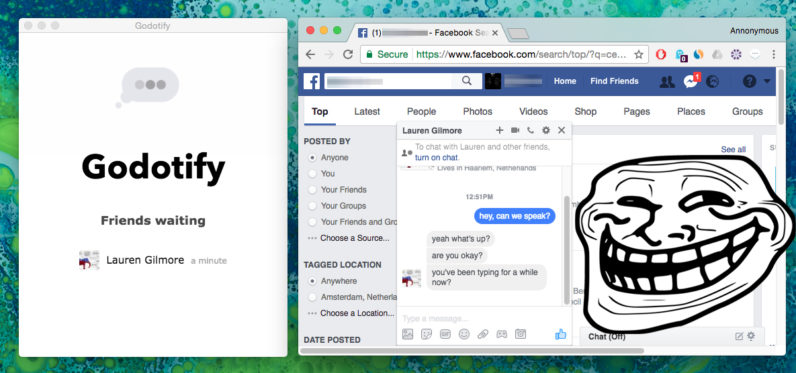

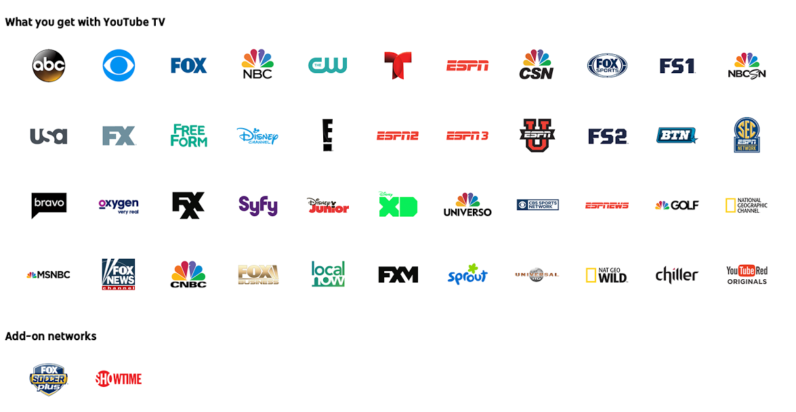
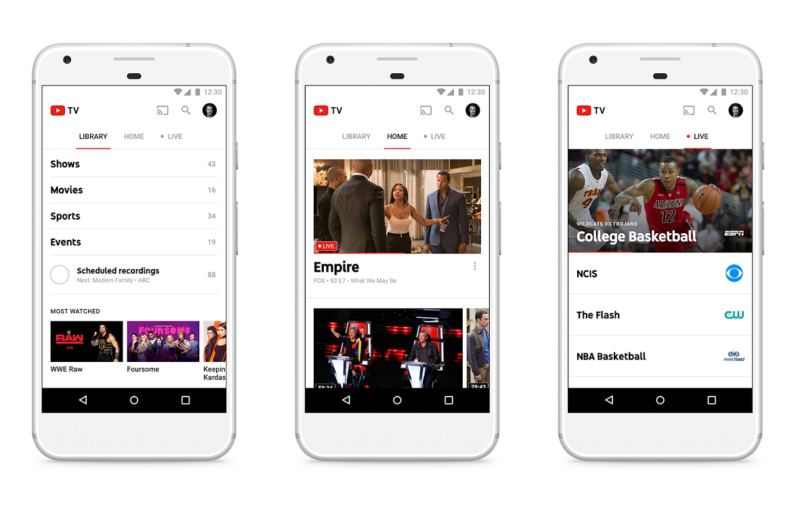

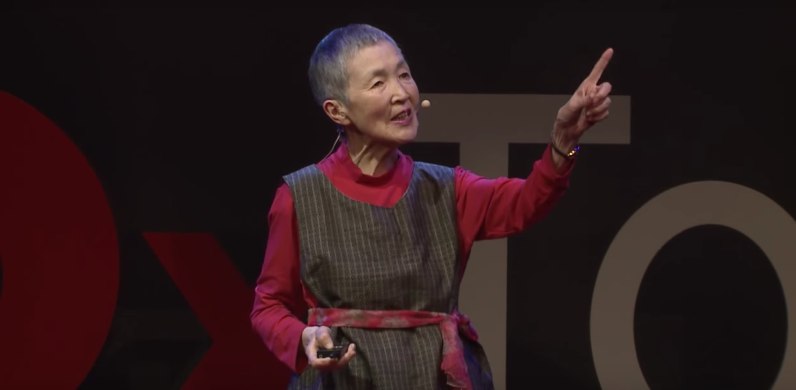


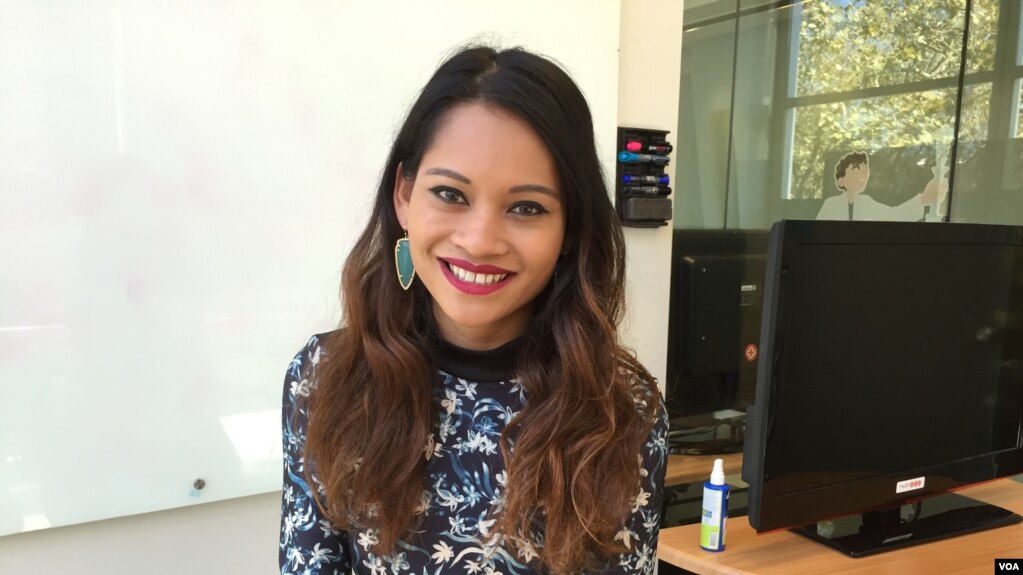
 Bill Gates made a parody Christmas-themed
Bill Gates made a parody Christmas-themed 


Follow Us